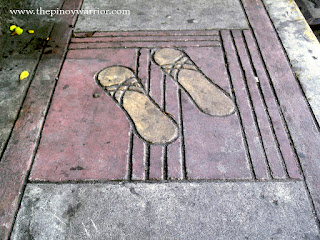Here in the Philippines, there is a city who's name was said to come from "sapatero" or shoemaker. Marikina became the shoe capital of the Philippines only after World War 2, but in Pateros, shoemaking has been a mainstay industry as well as making "balut."
Because of the innovative shoemaking skills of the people of Pateros, a different line of footwear emerged and it was called "Alfombra." The name means "carpet" in Spanish, and literally, the alfombra is a pair of slippers with carpeting. It is one of the best indoor slippers because of its comfort and durability. Colorful and very appealing, every pair is an absolute beauty. Seemingly, the alfombra is uniquely Filipino and only skilled shoemakers of Pateros can do it correctly.







